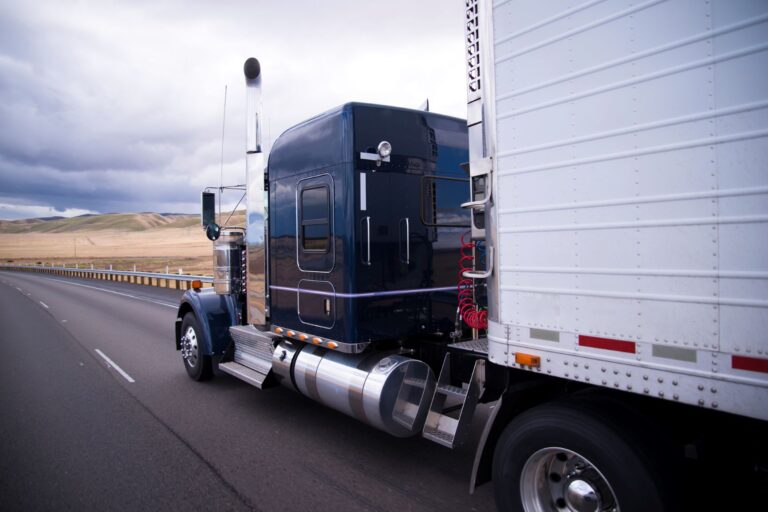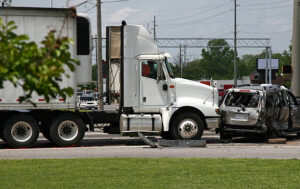The impact of the COVID-19 pandemic has reached trucking rates, too. What the total impact will be is anyone’s guess, but it’s improbable that so many businesses could shut down without a disruption in the supply-and-demand chain that guides the trucking industry.
At first the impact was good for trucking.
“Recent rate increases have been driven by aberrant consumer behavior,” explained Ken Adamo, chief of analytics at DAT. “Water, toilet paper and other supplies have caused a huge influx of demand,” he told The Trucker. “It’s primarily due to social distancing.”
Products have been flying off the shelves and retailers can’t restock them fast enough. Hoarding is a part of it, as consumers worry about potential shortages of food and household items such as toilet paper. Another fact, often overlooked, is that consumer spending changes when people are stuck at home. More meals — and more visits to the bathroom — are now taken at home.
DAT reported posting increases of 39.1% in March compared to February, besting March 2019 rates by 44.6%. Most of those increases came in the dry van and refrigerated segments. As the number of loads increased, rates followed. After falling to $1.79 per mile in February, van rates rebounded to $1.87 in March. Reefer rates fell to $2.09 per mile but rose to $2.19 in March.
The good news was short-lived, however. The increases in shipments of household products could not offset the shipments lost due to shutdown of manufacturing and service outlets for a sustained period. Shipment numbers must fall and, when they do, rates fall with them. The process has already begun.
“We have started to notice price degradation in the dry van and reefer segments, likely driven by heavy contraction in demand,” said Adamo. “The load to truck ratio, the number of loads posted with our service compared to the number of trucks looking for loads, has been decreasing steadily. We’re definitely seeing it impact rates.”
In the first week of April, spot rates for van fell by 2 cents per mile, while reefer rates lost 10 cents. That’s just the beginning.
“I think from a demand perspective, we’re going to do more than correct,” Adamo predicted. “I’m starting to think we’ll see a steep drop-off.”
A part of that drop off is due to Chinese freight.
“Nearly two months after shutting down for the Spring Festival holiday, China is only now starting to return to work,” said Kenny Vieth, president and senior analyst at ACT Research, in an April 3 release. “Domestic port and rail volumes have just begun to reflect the drop in Chinese output.”
A big reason for concern about port and rail volumes is Christmas.
“Remember that stocking up for the holiday season begins right around this time of year,” Adamo explained. “Retailers are deciding now how many Xboxes they will stock for Black Friday and placing orders accordingly.”
In an economy that’s long overdue for a recession, the impact of the COVID-19 pandemic will reach far beyond public health. Recession is a real possibility.
“Everyone is nervous. We’re definitely looking at recessionary pressure, but is it a “V” or a “U” shape?” said Adamo, referring to economic activity in graph form, wondering if it will fall quickly and rebound just as quickly, the “V” shape, or remain low for a while before rebounding, the “U” shape.
Adamo has some advice for small trucking businesses who depend on loads from the spot market.
“Information changes fast,” he said “Use technology to get the latest. For example, (spot) rates grew 10% from the end of February to mid-March. Did your broker tell you, or offer the same rate and keep the difference?”
DAT’s load board, the industry’s largest, provides up-to-the minute load information, while the service’s “Trendlines” page provides useful planning information.
“Be smart about rates,” Adamo continued. “Make the best decision using the best tools.”
Efficiency is important, too. Adamo counseled avoiding 300-mile deadheads to load backhauls, adding, “think in terms of lanes. A load with a good rate doesn’t help if it puts you somewhere that you lose money on the return trip.”
A good relationship with a broker is another way to keep the wheels turning profitably, he said.
“Most importantly,” Adamo concluded, “thank a trucker. These are extraordinary times,” he continued. “It’s very important to thank drivers and provide them with the recognition they deserve. They are saving a nation.”
Cliff Abbott is an experienced commercial vehicle driver and owner-operator who still holds a CDL in his home state of Alabama. In nearly 40 years in trucking, he’s been an instructor and trainer and has managed safety and recruiting operations for several carriers. Having never lost his love of the road, Cliff has written a book and hundreds of songs and has been writing for The Trucker for more than a decade.









Good relationships are out the window!
Brokers and shippers are not playing by the rules. In certain areas prices are being fixed or price gouging is occurring, who is looking out for the small trucking companies.
Small local trucking companies are the ones that bring back essential supplies to the communities they are from. Larger trucking companies are looking out for their big customers who do not ship or receive essential supplies to their communities.
Companies will start to make decisions to stop sending trucks to areas where price fixing is happening leading to more shortages in supply.
Trucking companies are paying for l the labor, fuel to transport, and insurance to transport. The brokers have no skin in the game they are strictly watching from the sidelines enjoying profits while someone else is taking the losses. There needs to be regulation to limit brokers and stop owner operators from running on there own permits this is driving trucking prices down.
We understand fuel has fallen and too many trucks with no work or freight because of the shutdown. But in relation to this there is a lack of drivers out looking for freight because there companies are shut down as well. So the very few companies that are out there are being ripped off or being forced to take cheap freight to move trucks.